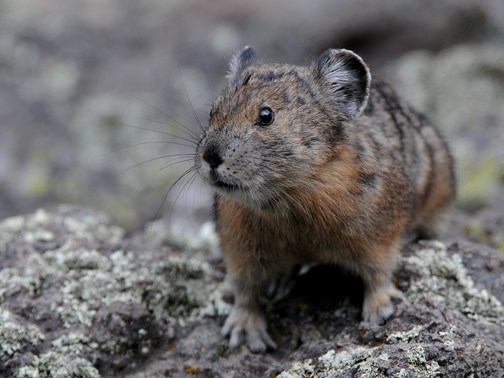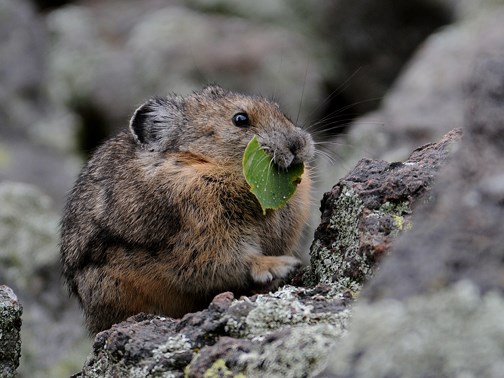
photo by sally king If a contest were ever held to determine which animal in the animal kingdom is the cutest, the American Pika would definitely be amongst the qualifiers. You might not expect to find this small ball of fur with legs in Bandelier National Monument. Pikas are alpine residents. If they cannot regulate their body temperature by going into cooler areas beneath the talus surface, they are intolerant of even short-term hot temperatures. In this park, pikas are found in small, isolated colonies at higher elevations. They live in volcanic boulder fields where they retreat to cool tunnels under the rocks for protection from the heat on long summer days. 
photo by sally king Pikas are closely related to rabbits and hares. In comparison to their relatives, pikas have shorter, rounder ears, and their hind legs are only slightly longer than their front legs. Unlike rabbits, pikas run and don't hop. Pikas emit a variety of sounds; their calls are very different from those made by their typically very-quiet cousins. In and around Bandelier, pikas are active mostly during the morning and evening hours. They will often venture off their rockpile homes to eat or collect plants for later consumption 
photo by sally king Pikas do not hibernate but stay active all winter long traveling in tunnels under the rocks and snow. In fact, a deep blanket of snow is important for the pika's survival. If the snow is deep enough it provides insulation for the pikas living below. Too little snow and the pikas risk freezing to death. The pikas stay alive during the long cold winter by eating dried plants cached earlier in the year and may travel out to vegetated areas nearby to collect more plant materials when possible. 
photo by sally king In Danger? 
photo by sally king 
photo by sally king 
photo by sally king |
Last updated: April 28, 2025
